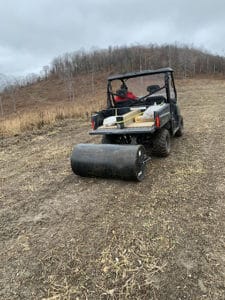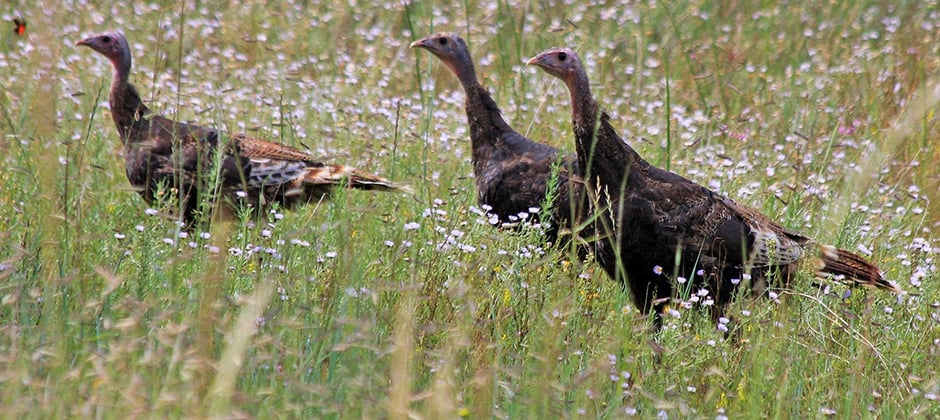Share this article
Aiding wild bees — and wild turkeys — with wildflowers
What do wild bees and wild turkeys have in common? By creating forage for pollinators, other species, like wild turkeys, may benefit, too.
That’s Matt DiBona’s plan. The New England district biologist for the National Wild Turkey Federation used a grant from Bayer Bee Care’s Feed a Bee program to establish 8 acres of pollinator forage in the Green Mountain National Forest in Vermont.
“One of my favorite parts about being a turkey biologist is that I get to play in so many different sandboxes,” he said. “Turkeys use so many different habitats. Particularly in the Northeast, a lot of our habitat work is tied to conservation work for other species.”
Often, that has included other bird species, like woodcock (Scolopax minor) or ruffed grouse (Bonasa umbellus) or the New England cottontail (Sylvilagus transitionalis). “Most recently,” DiBona said, “I would say pollinators are species where we see a lot of potential overlaps.”

Crews use a roller to pack seeds onto a site being prepared for pollinator habitat on Green Mountain National Forest in Vermont. ©NWTF
Prior to receiving the Feed a Bee grant, crews had already been working on integrated vegetation management projects to create forest openings to maintain early seral stage vegetation dominated by grasses, forbs and other early successional habitat.
DiBona hopes that by adding pollinator-friendly wildflowers to these openings, they can improve species diversity in the forest. Meanwhile, when members of the public come by to check out the flowers, signs at the sites will explain a bit about the role pollinators play in conservation.
That includes helping wild turkeys (Meleagris gallopavo), DiBona said.
“One of the really important components of turkey habitat is having good brooding sites for young turkeys,” he said. Poults need a lot of protein when they’re developing, he said, so hens tend to seek out areas with lots of insects. That makes spots that are good for pollinators good for turkeys, too, DiBona noted.
Last fall, crews from the National Wild Turkey Federation and Forest Service seeded 4 acres with a native seed mix in an effort to grow wildflowers favored by bees and other pollinators — plants like bluestem, partridge pea and milkweed. They returned in the spring to seed 4 more acres.
“Creating sustainable pollinator forage is something you’re seeing more agencies and conservation organizations paying attention to as a habitat priority,” DiBona said.
Managers hope to maintain the landscape in a successional stage to encourage more diversity in the forest. Furthermore, they encourage the public to visit the fields of wildflowers and learn about the importance of pollinators firsthand.
“When you make those connections between the importance of pollinators and how crucial they are not only to wildlife but to our own food security, I think that resonates a lot with people,” DiBona said.
Header Image: Wildflowers aren’t just good for pollinators. They can also benefit species like wild turkeys. ©J.N. Stuart








